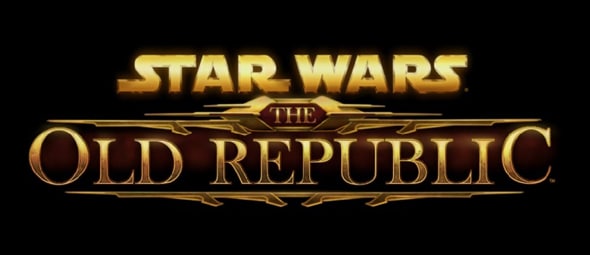We know as which classes we will fight, but we only know very little about possible species. While some might still grief over the 2011 release, we went ahead and collected information on BioWare’s future MMO. Screenshots, artworks and videos showed several species, which we will have to face in the game. We made it our business to categorize these enemies for you.
First off is humans.
Humans were the galaxy’s most numerous and politically dominant sentient species with millions of major and minor colonies galaxywide. Believed to have originated on the galactic capital of Coruscant, they could be found anywhere, engaged in many different pursuits: spacers, mercenaries, smugglers, merchants, soldiers, assassins, farmers, crime lords, laborers, slaves, slavers, and many others, including Jedi. Since Humans were the most common sentient species, they were often considered to be a standard or average to which the biology, psychology, and culture of other species were compared.
Like most of the galaxy’s sentient species, Humans had a torso, two legs, two arms, and one head. Other sentient species with a body type roughly similar to Humans were often referred to as humanoid, since Humans were the most common example. Their heads had two eyes, one nose for breathing and smelling, and a mouth for eating, breathing and communicating. Human arms had five-fingered hands for manipulation, mirrored by their legs’ five-toed feet. Also, like most species, they came in two sexes, male and female.
Unlike other mammalian species (such as Wookiees or Ewoks), they had only a light covering of body hair, with males being hairier than females. Most of their body hair was concentrated on the head and (in the case of adult males) face. This hair was grown, cut, and styled for aesthetic or ritualistic reasons (as with the elaborate hairstyles of the Royal Naboo and the traditional braids of Human Jedi Padawans.) Older Human males often demonstrated loss of the hair on their head. The facial hair grown by adult males could be grown, styled, or shaved completely.
Despite overall physiological uniformity, baseline Humans varied greatly in appearance. Their hair color ranged from blond to dark, sometimes with hues of red or brown, changing to gray or white as years passed. Their hair could be straight, wavy, or curly. Their eyes came in shades of blue, green, gray, or brown.
Gradiation of skin tone was also seen among baseline Humans, usually limited to various shades of brown, ranging from pale yellowish brown (e.g.: Bana Breemu), to light brown (e.g.: Luke Skywalker), and dark brown (e.g.: Lando Calrissian). Diversity in appearance was seen on many Human populations, and no particular features seemed to have been traceable to specific isolated communities on any locations. The planet Socorro could have conceivably been an exception, as most of its known Human inhabitants seemed to possess dark skin and hair.
History
Origin
Having a recorded and civilized history reaching back far beyond the beginning of space travel, before 200,000 BBY, the origin and early history of Humans was lost to their scientists in the depths of millennia. There were at least five planets that claimed to be the Human homeworld. Whatever the original homeworld was, it was universally accepted that Humans evolved on one of the Core Worlds near the galaxy’s center. Humans were among the few sentient species in the galaxy whose homeworld was unknown, the Ryn, Yoda’s species and the Baragwins being some other examples.
According to an inscription found by archaeologists Dr. Xathan and Fem Nu-Ar on Seoul 5 around 4 ABY, Humans originated on the planet Notron, an archaic name for Coruscant. The ancient Zhell nations, who drove the Near-Human Taung from Coruscant, may have been the progenitors of later Humans. Coruscant’s ground had been several kilometers below its inhabitants’ feet for millennia, with the lowest depths of its planet-wide city dating back to 100,000 BBY. Thus, it was impossible to carry out the historical study and archaeological research on the planet’s prehistory necessary to prove or to disprove that theory. In addition, Coruscant‘s natural climate was said to be too cold to support Human life, a claim difficult to be reconciled with the theory that it was the original Human homeworld. Tarnese Bleyd believed that the ancestors of humans favored trees and high ground based upon his observations of human hunting behavior.
It is possible that some ancient civilization, such as the Celestials or even the Rakata, transported early Humans from their original home planet to others. It was, in fact, alleged that they had once been a slave race of the Infinite Empire; however, any knowledge of Human enslavement was absent from Rakatan records as of 3,956 BBY. Some of the far-flung ‘colonies’ eventually diverged genetically from the Human baseline, giving rise to various Near-Human races and species.
During the Jedi Civil War, the Jedi Revan discovered evidence in the oral traditions of the Sand People on Tatooine that the human species may have originated as slaves taken from that planet by the Rakata, the Sand People being the genetically distinct species that evolved from those who were left behind. The fact that the Sand People’s legends indicated that the planet had once been far more temperate and habitable before an ancient war with the Rakata adds credence to this possibility. However, millennia of distortion introduced into the historical record combined with the Sand People’s extreme hostility to the idea of introducing new interpretations into their oral tradition made it impossible for Revan to investigate this further.

Humans discovered space travel themselves, early in their history; in fact, they were already present on a few scattered colony planets of the Core Worlds even before the development of hyperdrive, thanks to the use of sleeper ships. Coruscant had grown to a planet-wide city and from there, they spread to such Core Worlds as Alderaan, Corellia, Corulag, and Chandrila.
During their early history, Humans seem to have been subjugated by the Rakatan Infinite Empire. Though some sources indicate that they were enslaved workers on Rakatan projects such as the Star Forge, the fact that the droids and computers Rakatan ruins on Dantooine dating from that era did not recognize the Human species points to the contrary.
After the fall of the Infinite Empire circa 25,200 BBY, the Humans of the Core used Rakatan technology to set up a true interstellar civilization. At first, a network of hyperspace cannons linked Coruscant with other Human-populated worlds, as well as the Duros civilization. Corellian Humans were one of the first societies to develop hyperdrive starships sometime before 25,053 BBY, spreading the technology to other Core Worlds. With the hyperdrive, their scouts and explorers traveled and met with other species, in a time known as the Expansionist Era.
The Human colonies, which had expanded through the Core Worlds through slower-than-light travel, later established daughter colonies of their own in what became the Colonies region. During the last pre-Republic years, Humans reached the Outer Rim and populated planets as far away as the Tion Cluster. The Tionese warlord Xim the Despot, whose conquests reached from the Cronese Sweeps to the Si’Klaata Cluster at the edge of Hutt Space, was one of the most prominent Humans of the pre-Republic period.
The Republic
During the Expansionist Era, Humans began to play a dominant role in the development of the galaxy and in galactic politics. These Humans were eventually responsible for the Unification Wars, which resulted from their expansionistic views. The wars themselves led to the formation of the Galactic Republic, a galaxy-spanning affiliation of worlds and species. Though the Republic had many member species, most of the Republic’s political, military, and economic leaders were Humans. Humans also made up a large proportion of the Jedi Order, and eventually came to dominate the Jedi’s constant enemies, the Sith Order. By the end of the Old Sith Wars, Humans also made up the majority of the Mandalorian warrior culture.
Most Humans under the Republic lived on predominantly Human worlds, although many Humans lived alongside aliens on their homeworlds, or together with several other species. Humans were more likely to live among nonhumans on the cosmopolitan Core Worlds, or on frontier worlds at the Outer Rim of the galaxy such as Tatooine. Predominantly Human worlds outside of the Core included Eriadu, Naboo, Socorro, and Bakura.
Human population levels and significance inevitably led to a Humanocentric galaxy. Humanocentrism was pervasive and in many cases, subconscious. Humanocentrism was the source for the Human use of the term “alien” to describe nonhuman species. In some cases, this led to overt and even violent outbreaks of speciesism. Although explicit Humanocentrism was outlawed by the Rights of Sentience clause of the Galactic Constitution, Human-led companies such as Czerka enslaved entire nonhuman species, while planets such as Taris reserved the best sections of the world for Humans and forced nonhumans into ghettos. The majority of slaves in the galaxy were nonhumans.

Many species in the galaxy appeared to be very closely related to Humans, as they shared many physical traits. These were described as being near-Human, and were believed to have descended from Humans that evolved along distinct lines on other worlds. Among the most prominent near-Human races were the Chalactans, the Chiss, the Hapans, the Kiffar, the Miraluka, the Mirialans, and the Zeltrons. All of these were mostly Human in appearance, but had unique and distinct defining characteristics. Often, the biological differences were small enough that Humans and near-Humans could interbreed. In many cases, it was difficult to tell whether a given population represented a distinct species, or merely a race or ethnic group of baseline Humans.
The term near-Human was more specific than humanoid. While near-Humans were biologically related to Humans, other humanoid species merely shared broad external similarities such as an upright bipedal posture.









